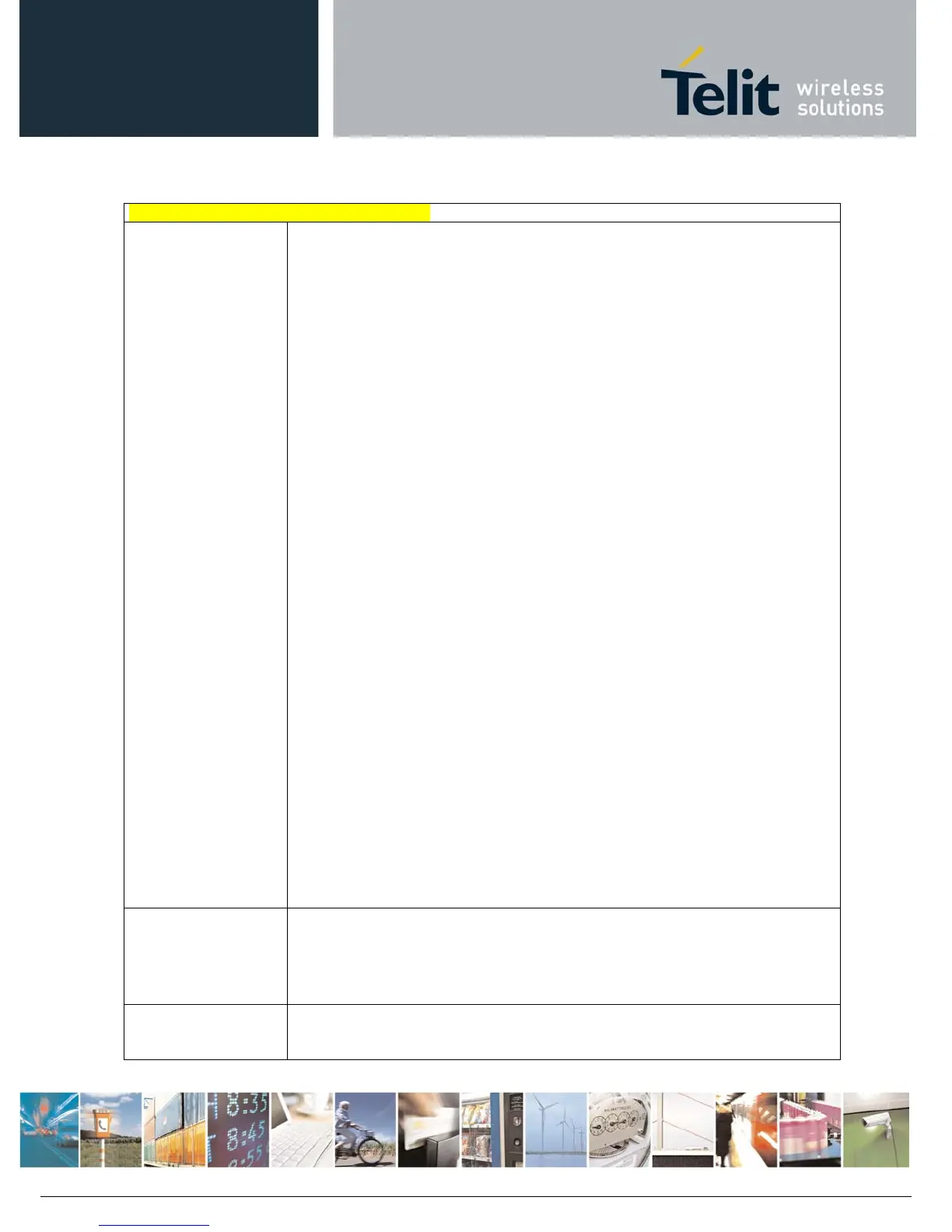AT Commands Reference Guide
80529ST10815A Rev.2– 2017-09-14
ReproductionforbiddenwithoutTelitCommunicationsS.p.A.writtenauthorization‐AllRightsReserved page181of233
#SSLSECDATA - Manage the security data
<Action> - Action to do.
0 – Delete data from NVM.
1 – Store data into NVM.
2 – Read data from NVM.
<DataType>
0 – Certificate.
1 – CA certificate.
2 – RSA Private key.
<Size> - Size of security data to be stored 1..2047
If the
<Action> parameter is 1 (store data into NVM) the device responds to the
command with the prompt ‘>’ and waits for the data to store.
To complete the operation send Ctrl-Z char (0x1A hex); to exit without writing the
message send ESC char (0x1B hex).
If data are successfully stored, then the response is OK; if it fails for some reason,
an error code is reported.
If the
<Action> parameter is 2 (read data from NVM), data specified by
<DataType> parameter is shown in the following format:
#SSLSECDATA: <connId>,<DataType>
<DATA>
OK
If <DataType> data has not been stored (or it has been deleted) the response has
the following format:
#SSLSECDATA: <connId>,<DataType>
No data stored
OK
Note
: Secured data has to be in PEM format.
Note: private keys with password ARE NOT supported.
Note: only “rsa_sign” certificates are supported by the Telit Module in client
authentication. The remote server must support this certificate type, otherwise the
handshake will fail.
Note: <size> parameter is mandatory if the <write> action is issued, but it has to be
omitted for <delete> or <read> actions are issued.
Note: if secure socket is not enabled using AT#SSLEN only test requests can be
made.
Note: If socket is connected an error code is reported.
AT#SSLSECDATA?
Read command reports what security data are stored in the format:
#SSLSECDATA:<SSId1>,<CertIsSet>,<CAcertIsSet>,<PrivKeyIsSet>
<CertIsSet>, <CAcertIsSet>, <PrivKeIsset>
are 1 if related data are stored into
NVM otherwise 0
AT#SSLSECDATA=
?
Test command returns the range of supported values for all the parameters:
#SSLSECDATA: (1),(0-2),(0-2),(1-2047)

